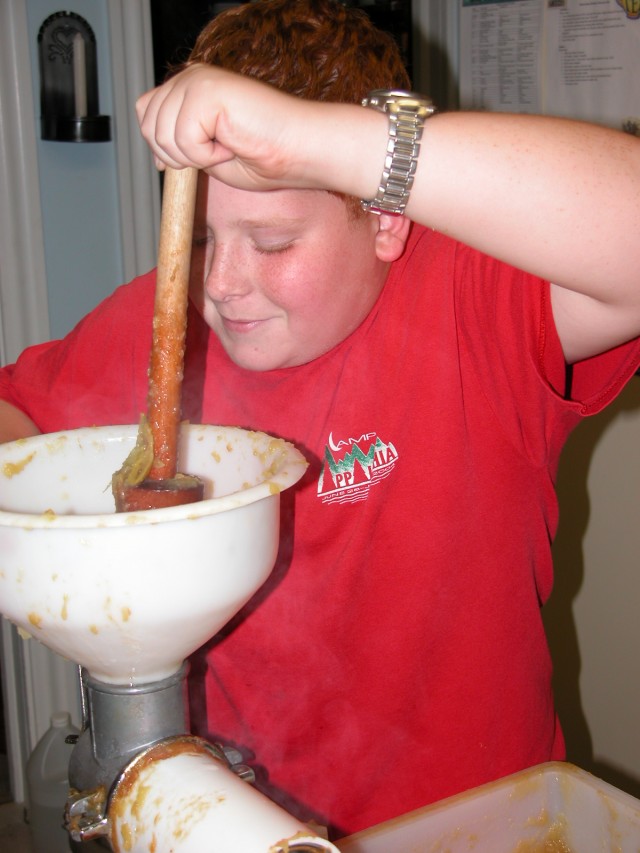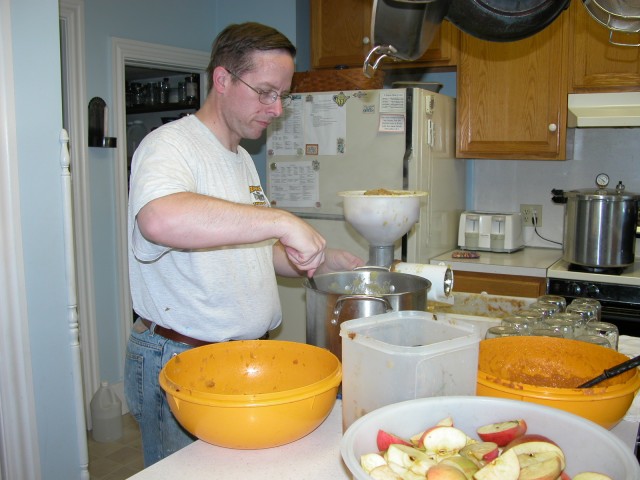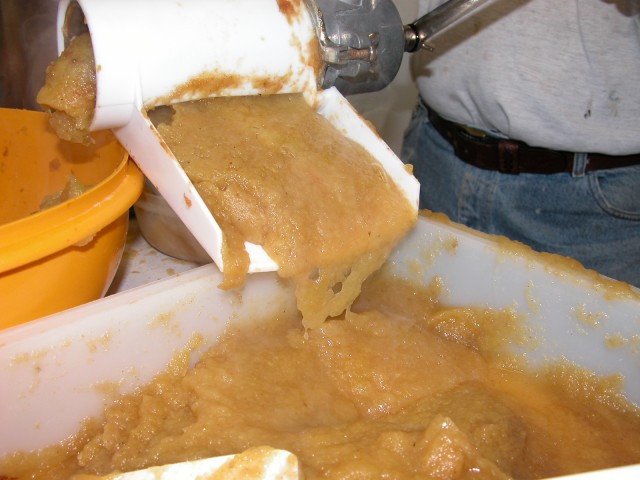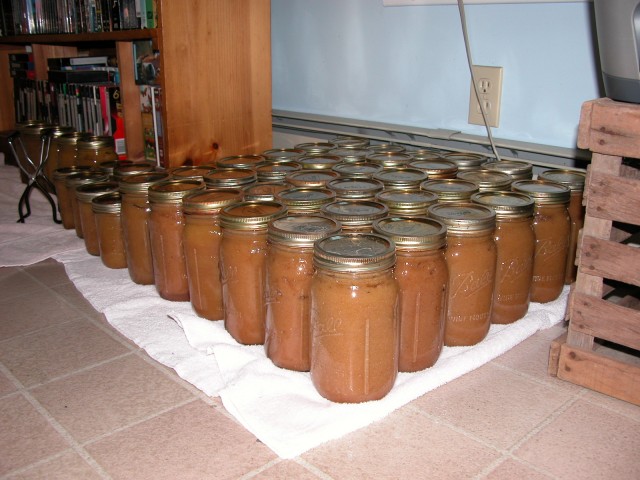October 19, 2005: Yesterday was our family’s annual (or sometimes biennial if we make enough) Applesauce Canning Day. This time, we processed 35 quarts plus kept about 7 quarts fresh in the fridge, which we decided not to can because we were pooped and it was getting late. We live right in the middle of the highest apple-producing county in PA, so this is a natural for us, almost a duty. The Husband loves homemade applesauce, more specifically, my homemade applesauce. He helps a lot with the processing, but no one is allowed to sweeten and spice each batch but me, according to him. Unfortunately, in mid-afternoon he and our daughter were called out to a house fire (they are volunteer firefighters), so I was left to tend the range alone. Next time, we’ve got to make less — my energy level just isn’t up to this amount of output. The trouble is, our two boys are entering the stage where they vacuum up everything in sight. I don’t think either of them would have any difficulty at all eating a whole quart at a time if they thought it was allowed.
Imagine the scene: The kitchen is a 13 year-old remodel in a 100 year-old typical PA Dutch wood frame farmhouse in a tiny town in south central Pennsylvania. It is not a high-end remodel; rather, it is a Formica/linoleum middle-class job, though it is extremely functional and a pleasant heart of this home.
Big, crisp Nittany apples are washed, cut into quarters, and simmered in a bit of water in a big black spatterware enameled pot on the gas stove until they are mushy. When the lid is lifted to stir them up, wafts of apple-y steam meander through the kitchen and out into the October sunshine. The cooked apples are squooshed through a Victorio strainer, a wondrous device that separates the apple flesh from the peels and cores. Sauce emerges from one aperture; detritus bound for the compost heap comes out of another.
The sauce is sweetened with sugar, cinnamon, allspice, and cloves, which add their own sharp notes to the fragrant air. The hot sauce is ladled into quart Mason jars, which alone are privy to their history beyond the years in this house. (Who knows how many hands have filled and emptied them with who knows what bounties?) Methodically, the rims are wiped clean, flats applied, and bands tightened in place. Into the tall pressure canner they go for 0 minutes at 15 psi. They are gingerly lifted out one by one and set on a clean bath towel in an out of the way spot on the kitchen floor. Most are already sealed, but a few surprise the workers with their soft but distinct “ping!” as they complete the preservation process.
Next morning, the sticky bands are removed (there is always some sauce leakage in the canner and it takes only a smidgen to coat all the jars with sweet residue) and the jars are soaked, six at a time, in a bath of warm water in one side of the sink. They are scrubbed gently all over to remove the tacky mold-growing apple coating and set on another clean towel on the island. When finally dry, the lids are labeled with the year and they are ready to be ferried to the basement pantry shelves. But first, the cook takes a few moments to enjoy them in all their glory — they stand in rows like soldiers awaiting orders, sparkling in a shaft of sunlight from the back door. She is tired, to be sure, but this moment is pure pleasure. She smiles thinking of the delight she’ll have in the months to come when she fetches one of these jars up to the kitchen and pours the contents into a bowl, a jar full of October’s essence to add to the family table.




 Follow
Follow

One Comment